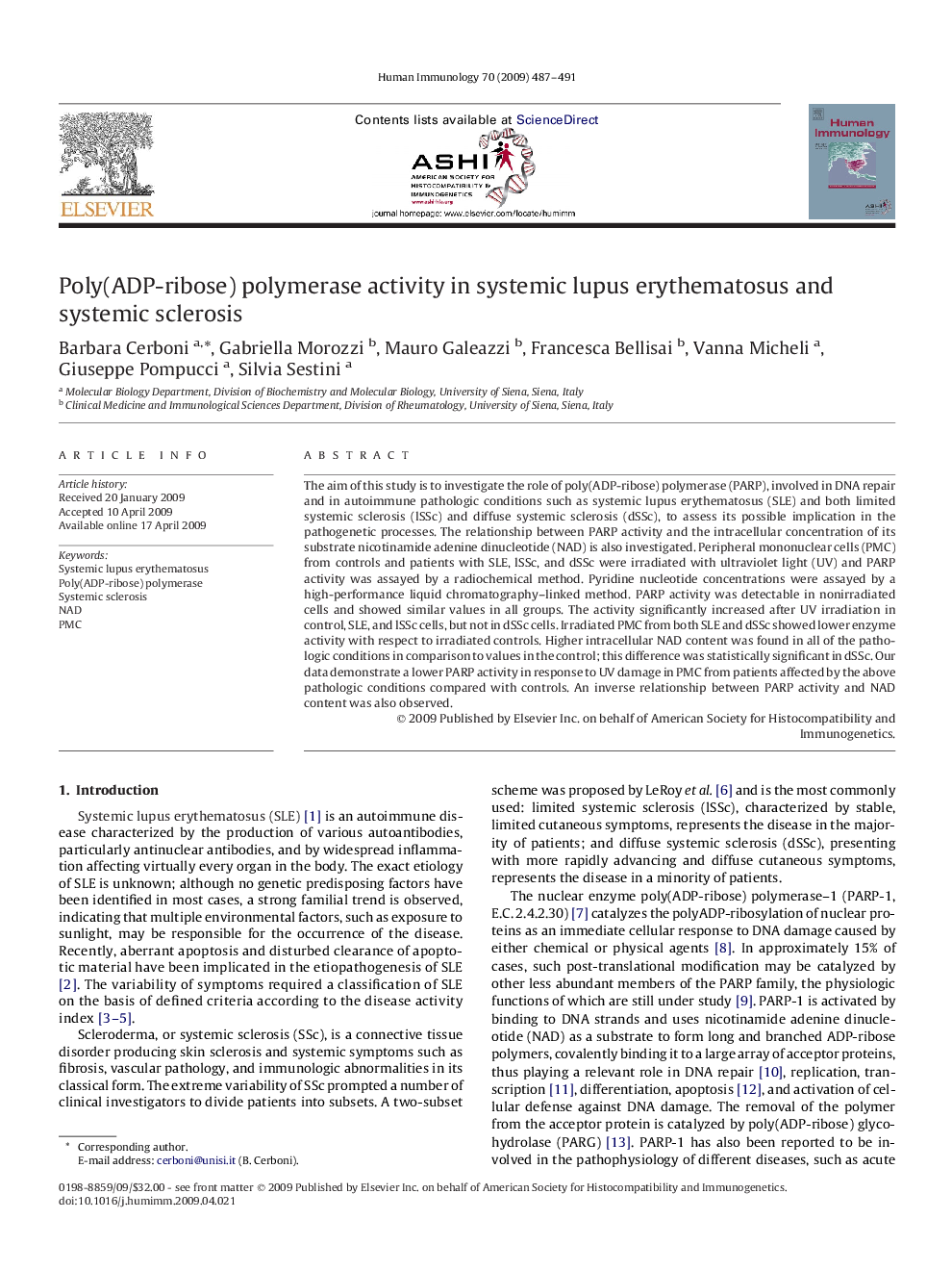| Article ID | Journal | Published Year | Pages | File Type |
|---|---|---|---|---|
| 3351457 | Human Immunology | 2009 | 5 Pages |
Abstract
The aim of this study is to investigate the role of poly(ADP-ribose) polymerase (PARP), involved in DNA repair and in autoimmune pathologic conditions such as systemic lupus erythematosus (SLE) and both limited systemic sclerosis (lSSc) and diffuse systemic sclerosis (dSSc), to assess its possible implication in the pathogenetic processes. The relationship between PARP activity and the intracellular concentration of its substrate nicotinamide adenine dinucleotide (NAD) is also investigated. Peripheral mononuclear cells (PMC) from controls and patients with SLE, lSSc, and dSSc were irradiated with ultraviolet light (UV) and PARP activity was assayed by a radiochemical method. Pyridine nucleotide concentrations were assayed by a high-performance liquid chromatography-linked method. PARP activity was detectable in nonirradiated cells and showed similar values in all groups. The activity significantly increased after UV irradiation in control, SLE, and lSSc cells, but not in dSSc cells. Irradiated PMC from both SLE and dSSc showed lower enzyme activity with respect to irradiated controls. Higher intracellular NAD content was found in all of the pathologic conditions in comparison to values in the control; this difference was statistically significant in dSSc. Our data demonstrate a lower PARP activity in response to UV damage in PMC from patients affected by the above pathologic conditions compared with controls. An inverse relationship between PARP activity and NAD content was also observed.
Related Topics
Life Sciences
Immunology and Microbiology
Immunology
Authors
Barbara Cerboni, Gabriella Morozzi, Mauro Galeazzi, Francesca Bellisai, Vanna Micheli, Giuseppe Pompucci, Silvia Sestini,
